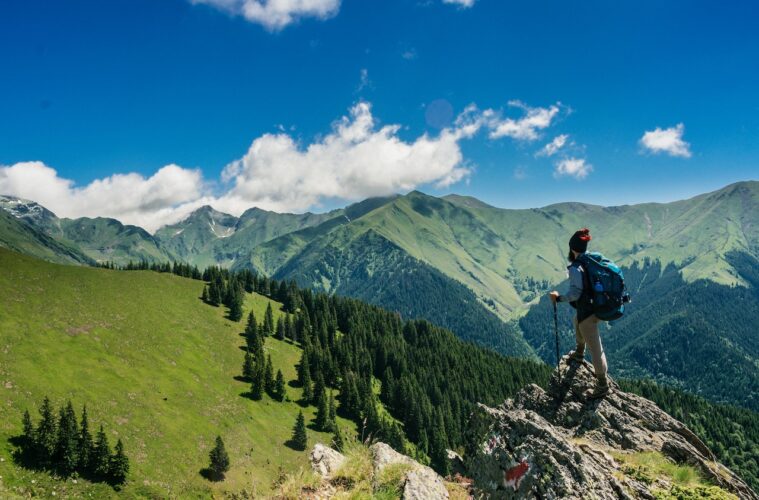Shoulder season is a term used by travel enthusiasts to describe the period between peak and off-peak seasons. This period is characterized by fewer crowds, lower prices, and more temperate weather conditions. Shoulder season is an excellent time to travel for those who want to avoid the high costs and crowds of peak season while still enjoying favorable weather conditions.
Understanding shoulder season is essential for travelers who want to make the most of their trips. The timing of shoulder season varies depending on the destination, but it generally falls between peak and off-peak seasons. Shoulder season offers a unique travel experience as it provides a balance between the advantages of peak and off-peak seasons. Travelers can enjoy lower prices, fewer crowds, and favorable weather conditions during this period.
Key Takeaways
- Shoulder season is the period between peak and off-peak seasons, characterized by fewer crowds, lower prices, and more temperate weather conditions.
- Understanding shoulder season is essential for travelers who want to make the most of their trips.
- Shoulder season offers a unique travel experience as it provides a balance between the advantages of peak and off-peak seasons.
Understanding Shoulder Season
Shoulder season refers to the period between high/peak season and low/off-season. It is the time when tourism activities are not at their peak, and prices are relatively lower compared to peak season. Shoulder season is also the time when weather conditions are usually favorable, and crowds are fewer.
The exact dates of shoulder season vary depending on the destination, but it is usually characterized by a decrease in visitor numbers, hotel rates, and airfares. Shoulder season is an excellent time for travelers who want to avoid the crowds and enjoy the destination’s attractions without the high costs associated with peak season.
In some destinations, shoulder season may coincide with the head season, which is the period when the weather is at its best, and the destination is not yet crowded. Head season is an excellent time to visit a destination as it offers the best of both worlds – favorable weather and fewer crowds.
In contrast, high/peak season is the period when tourism activities are at their peak, and prices are at their highest. This is usually the time when the weather is at its best, and the destination is crowded with tourists. High/peak season is a great time for travelers who want to experience the destination’s vibrant atmosphere and enjoy its attractions to the fullest.
Low/off-season, on the other hand, is the period when tourism activities are at their lowest, and prices are at their lowest. This is usually the time when the weather is not favorable, and the destination is least crowded. Low/off-season is an excellent time for travelers who want to save money and avoid the crowds.
In conclusion, understanding shoulder season is crucial for travelers who want to plan their trips effectively. It is a time when prices are relatively lower, and crowds are fewer, making it an ideal time to visit a destination.
Weather Conditions During Shoulder Season
Shoulder season is the period between peak season and off-season, when the weather is usually milder, and the crowds are thinner. The weather conditions during shoulder season can vary widely depending on the location and the time of year.
In general, shoulder season in spring and fall is characterized by cooler temperatures and less precipitation than the summer months. In winter, shoulder season can mean snow is starting to melt and temperatures are rising, but it can also mean colder temperatures and more snowfall.
During shoulder season in autumn, the weather can be unpredictable, with warm and sunny days followed by cooler and wetter weather. Temperatures can range from the high 50s to low 70s Fahrenheit (around 15 to 25 degrees Celsius), with occasional snowfall in higher elevations.
In spring, shoulder season can mean a mix of rain and sunshine, with temperatures ranging from the 40s to 60s Fahrenheit (around 5 to 20 degrees Celsius). Snow can still be present in higher elevations, but it is usually melting.
In winter, shoulder season can mean colder temperatures and more snowfall, especially at higher elevations. However, in some locations, such as coastal areas, shoulder season can mean milder temperatures and less snow.
Overall, the weather conditions during shoulder season can be variable and unpredictable, but they often offer a pleasant balance between the extremes of peak season and off-season.
Traveling During Shoulder Season
Traveling during shoulder season can be a great option for those looking to save money while still enjoying a great vacation. Shoulder season is the period between the high and low seasons, when the weather is still good but the crowds have thinned out. This means that you can enjoy lower prices, shorter lines, and a more relaxed atmosphere.
One of the benefits of traveling during shoulder season is that you can often find great deals on flights and accommodations. Many airlines and hotels offer special rates during this time to attract more visitors. This can make it much more affordable to take a trip, especially if you are on a budget.
Another advantage of traveling during shoulder season is that you can avoid the crowds. This means that you can enjoy popular tourist attractions without having to deal with long lines or large crowds. You can also enjoy a more authentic experience, as you will be able to interact with locals and experience the culture in a more meaningful way.
When planning a trip during shoulder season, it is important to keep in mind that the weather may not be as predictable as it is during the high season. However, this can also be an advantage, as you may be able to enjoy more pleasant weather than you would during the peak season. It is also important to research the destination you are visiting to find out what activities and attractions are available during the shoulder season.
Overall, traveling during shoulder season can be a great option for those looking to save money and avoid the crowds. With a little research and planning, you can have a great vacation without breaking the bank.
Geographical Variations in Shoulder Season
Shoulder season refers to the period between peak and off-peak seasons. The duration of shoulder season varies depending on the location. In Europe, shoulder season generally falls between April and June and from September to November. In the United States, shoulder season varies by region, but it is generally from September to November and from March to May.
In the northern hemisphere, shoulder season is typically during the spring and fall months. During this time, the weather is milder, and the crowds are smaller, making it an ideal time to travel. In the Caribbean, shoulder season is from mid-April to mid-December, when the weather is warm, and the crowds are smaller.
Geographical variations in shoulder season can affect the availability and pricing of accommodation, tours, and activities. In Europe, for example, the shoulder season is the best time to visit popular destinations like Paris, Rome, and Barcelona. During this time, the weather is pleasant, and the crowds are smaller, making it easier to explore the city’s attractions.
In the United States, shoulder season varies by region. In the Northeast, for example, fall is the best time to visit, with the leaves changing colors and the weather being mild. In the Southwest, spring is the best time to visit, with the wildflowers in bloom and the temperatures being comfortable.
In the Caribbean, shoulder season is an ideal time to visit because the weather is warm, and the crowds are smaller. During this time, visitors can enjoy the beaches, water sports, and other outdoor activities without the crowds.
Overall, geographical variations in shoulder season can provide travelers with a unique experience, depending on the location they choose to visit. Travelers should consider the weather, crowds, and availability of activities when planning their trip.
Shoulder Season and Accommodation
During shoulder season, travelers can enjoy lower prices and fewer crowds, making it an ideal time to travel. However, finding suitable accommodation during this time can be challenging, especially for those who prefer luxury stays.
Hotels and accommodations during shoulder season may offer discounts or special rates to attract visitors. However, it’s important to note that not all hotels and accommodations may be open during this time. Some may close down for the season, while others may have limited availability.
Travelers looking for luxury accommodations during shoulder season may need to do some research and planning in advance. Some luxury hotels may offer reduced rates during this time, but it’s important to book early as availability may be limited.
For those on a budget, shoulder season can be an excellent time to find affordable accommodations. Hostels and budget hotels may offer even lower rates during this time, making it an ideal time for backpackers and budget travelers.
Overall, finding suitable accommodations during shoulder season requires some planning and research. However, with the right preparation, travelers can enjoy a comfortable and affordable stay during this time.
Air Travel in Shoulder Season
Air travel during shoulder season can be less expensive than peak season travel. Airlines may offer lower airfares and fares to attract more customers during this time. However, it is important to note that prices can vary depending on the destination and the time of year.
During shoulder season, airlines may also reduce the number of flights to certain destinations. This can result in fewer options for travelers and may require more planning ahead of time. It is recommended to book flights in advance to secure the best fares and avoid last-minute price increases.
Travelers should also be aware of potential weather-related delays during shoulder season. As shoulder season falls between peak and off-peak seasons, weather conditions can be unpredictable. It is important to check weather forecasts and plan accordingly to avoid any potential disruptions to travel plans.
Overall, air travel during shoulder season can offer cost savings and fewer crowds, but it is important to research and plan ahead to ensure a smooth and enjoyable travel experience.
Shoulder Season and Holidays
Shoulder season refers to the period between peak and off-peak travel seasons. It is usually characterized by fewer crowds, lower prices, and more moderate weather conditions. Shoulder season can be a great time to travel, especially for those who prefer to avoid the crowds and save some money.
During shoulder season, holidays can have a significant impact on travel. For instance, March and April are popular months for spring break, which can lead to higher prices and more crowds in popular destinations. Similarly, September and October can be busy due to fall foliage and harvest festivals.
Easter is another holiday that can affect travel during shoulder season. It falls in either March or April and can lead to increased crowds and higher prices in popular destinations. Christmas is also a popular holiday that can impact travel during shoulder season, especially in December.
Overall, travelers should be aware of holidays and events when planning their shoulder season travels. While they can provide unique experiences, they can also lead to higher prices and more crowds. By planning ahead and being flexible with travel dates, travelers can make the most of shoulder season and enjoy a more relaxed and affordable vacation.
Shoulder Season and Parks
Shoulder season refers to the period between peak and off-peak seasons, when the weather is mild and the crowds are thinner. This is an ideal time to visit parks and attractions, as visitors can enjoy the benefits of both peak and off-peak seasons.
During shoulder season, visitors can enjoy the beauty of parks without the crowds and long lines. They can also take advantage of lower prices on accommodations, transportation, and activities. Shoulder season is a great time to explore parks and attractions that are typically crowded during peak season.
Many parks offer special events and activities during shoulder season, such as guided hikes, wildlife tours, and fall foliage tours. Visitors can also take advantage of the cooler weather to hike, bike, or kayak without the heat and humidity of summer.
Some parks are particularly beautiful during shoulder season. For example, Yellowstone National Park is stunning in the fall, with its changing leaves and fewer visitors. Acadia National Park in Maine is also beautiful in the fall, with its colorful foliage and cooler temperatures.
Overall, shoulder season is a great time to visit parks and attractions. Visitors can enjoy the beauty and activities of peak season without the crowds and high prices.
Shoulder Season and Nightlife
Shoulder season is the period between the peak and off-peak seasons, where the number of tourists is lower, and the prices are more affordable. While most people associate shoulder season with fewer crowds and lower prices, it’s also an excellent time to experience the local nightlife and festivals.
Nightlife during shoulder season can be a unique experience as it’s less crowded, and the locals are more relaxed. You can enjoy a more intimate atmosphere in bars and nightclubs, and you might even get a chance to chat with the locals and learn more about their culture. Most of the popular tourist destinations have a vibrant nightlife scene, and during shoulder season, you can experience it without the overwhelming crowds.
Festivals are also a significant part of the shoulder season, and they can provide a glimpse into the local culture and traditions. During shoulder season, you can attend festivals without the long lines and overcrowded venues. You can enjoy the local food, music, and art without feeling rushed or overwhelmed.
In conclusion, shoulder season is an excellent time to experience the local nightlife and festivals. You can enjoy a more intimate atmosphere, learn more about the local culture, and avoid the overwhelming crowds. Whether you’re looking for a relaxing vacation or an adventure, shoulder season has something to offer for everyone.
Shoulder Season and College Students
Shoulder season is an ideal time for college students to travel due to several reasons. Firstly, it is a time when the tourist crowds have dispersed, making it easier to get around and explore new places. Secondly, the weather is often mild and pleasant, making it an ideal time for outdoor activities. Finally, prices for flights, accommodations, and activities are often significantly lower than during peak season, making it a more affordable time to travel.
For college students who are on a tight budget, shoulder season can be the perfect time to visit popular destinations without breaking the bank. Many airlines and hotels offer special discounts during this time, making it easier for students to afford their travel expenses. Additionally, with fewer tourists around, it is easier to find good deals on local activities and attractions.
Another benefit of traveling during shoulder season is that it is often less crowded, allowing students to explore popular destinations without the crowds. This makes it easier to get around and see more of the sights, without having to deal with long lines or wait times.
However, it is important for college students to keep in mind that shoulder season can vary depending on the destination. For example, some destinations may have shoulder season during the fall months, while others may have it during the spring months. It is important to do research and plan accordingly to ensure that they are traveling during the most affordable and comfortable time for their destination.
In summary, shoulder season can be an ideal time for college students to travel due to lower prices, fewer crowds, and mild weather. However, it is important to research the destination and plan accordingly to ensure a successful and enjoyable trip.
Shoulder Season and Crowds
Shoulder season is the time of year between peak and off-peak seasons, when the weather is still pleasant but the crowds have thinned out. This is a great time to travel for those who want to avoid the high prices and large crowds of peak season, but still want to enjoy good weather and fewer crowds.
One of the biggest advantages of traveling during shoulder season is the reduced crowds. This means that visitors can enjoy popular attractions without the hassle of long lines and overcrowding. In addition, accommodations and flights are often cheaper during this time, making it an ideal time for budget-conscious travelers.
However, it is important to note that shoulder season can vary depending on the destination. For example, some places may have a shoulder season during the rainy season, which may not be ideal for some travelers. It is important to do research on the destination’s climate and tourism trends before planning a trip during shoulder season.
Overall, shoulder season provides a great opportunity for travelers to enjoy a destination without the crowds and high prices of peak season. By doing research and planning ahead, travelers can make the most of their trip during this time.
Shoulder Season and Riding
Shoulder season refers to the time between peak season and off-season, typically characterized by fewer crowds, lower prices, and more favorable weather conditions. For riders, shoulder season can be an excellent time to hit the road and explore new destinations without the hassles of peak season.
During shoulder season, riders can enjoy more comfortable temperatures, less traffic, and better deals on accommodations and activities. Many popular riding destinations, such as mountainous areas or coastal regions, are more enjoyable to explore during shoulder season when the weather is milder and more pleasant.
Riders who choose to travel during shoulder season should be prepared for some potential challenges, such as unexpected weather conditions or limited availability of services and attractions. However, with some careful planning and flexibility, riders can make the most of their shoulder season adventures.
Some tips for riding during shoulder season include:
- Checking weather forecasts and packing appropriate gear for changing conditions
- Being aware of potential road closures or limited access to certain areas
- Making reservations in advance for accommodations and activities
- Being flexible and willing to adjust plans if necessary
Overall, shoulder season can be an excellent time for riders to explore new destinations and enjoy the freedom of the open road without the crowds and high costs of peak season.
Frequently Asked Questions
What are the best shoulder season destinations?
The best shoulder season destinations vary depending on personal preferences and interests. Some popular options include European cities such as Paris, Rome, and Barcelona, as well as national parks in the United States like Yosemite and Zion. Beach destinations like Hawaii and the Caribbean can also be great options during shoulder season.
What are the shoulder season months?
Shoulder season typically refers to the months between peak and off-peak travel seasons. In general, shoulder season falls in the months of April, May, September, and October, but this can vary depending on the destination.
What is shoulder season also called?
Shoulder season is also commonly referred to as “off-peak season” or “low season.”
Why is shoulder season a good time for hiking?
Shoulder season can be a great time for hiking because the weather is often mild and the crowds are smaller. Trails are typically less crowded, allowing for a more peaceful and enjoyable experience.
What are some recommended shoulder season travel destinations in Europe?
Some recommended shoulder season travel destinations in Europe include Paris, Rome, Barcelona, Amsterdam, and Prague. These cities offer mild weather, smaller crowds, and lower prices during shoulder season.
Where can I go for shoulder season hunting?
Shoulder season hunting destinations vary depending on the type of game you are looking to hunt and the location. Some popular options include Colorado, Montana, and Alaska for big game hunting, and Texas and Georgia for bird hunting. It’s important to research the hunting regulations and seasons for your desired destination before planning your trip.





